Mobile matters
Since the launch of the iPhone in 2007, mobile filled a huge gap in the computer devices industry. Numbers speak by themselves.
Earth statistics
As a reminder before we dive into figures, we're 7.6 billion around the globe as of 2018.
Among these people, the potential market for mobile apps is of 5 billion (i.e. people with a mobile phone).
If we only take into account active smartphones, we get around 3.5 billion smartphones (not users, smartphones!)
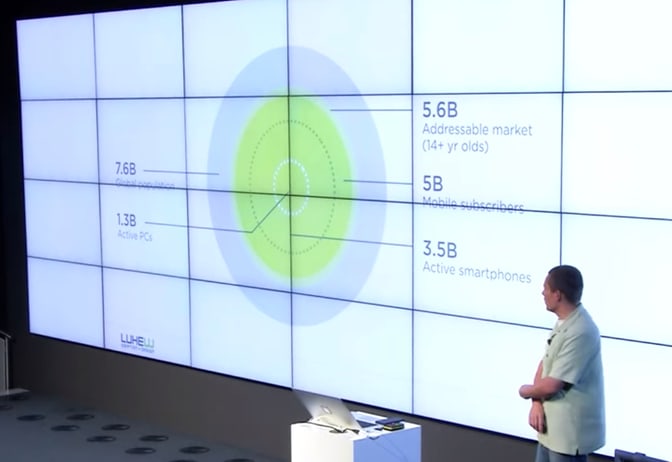
To put things into perspective, note that there are currently 1.3 billion of active desktops and laptops (1.2B Microsoft from which 700M Windows 10, and 110M Mac).
In 2023, we're planned to hit 5B active smartphones, and population should be around 8B.

Shipments
In 10 years, we went from 68M to 1.7B smartphones sold per year.
As of 2017, the cumulative numbers of devices currently on Earth were: 3 billion of smartphones, and 1.5 billion of PCs.
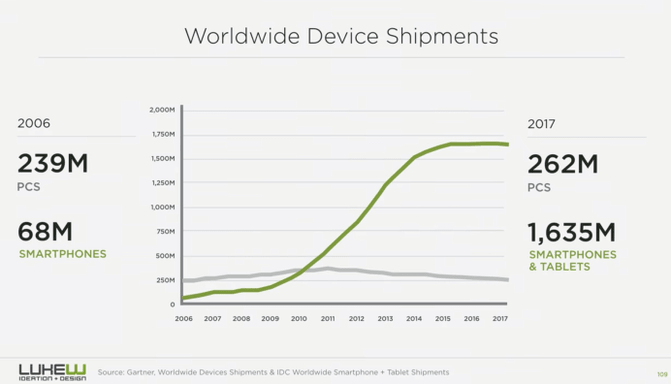
iOS vs. Android
Regarding shipments, Apple takes a 15% share and Google Android the remaining 85%. This is explained by the different pricing strategy with Google covering a wide range, while Apple focuses on the high-end mostly.
If we think in terms of active smartphones, the split between the two operating systems is 25% of Apple iOS and 75% of Android.
On average, statistics say that an Apple user keep his device for 4.25y, and an Android user for 2y.
Usage and time spent
Let's take the example of Facebook over the last decade.
On desktop, they went from 12M Monthly Active Users (MAU) to 120M MAU.
On mobile, they started from 12M MAU to end up at 1.74B!
As of 2018, the time spent on mobile app per adult in the US was 3 hours. It's the only media that goes up compared to other medias such as TV or laptops.
From these 3h, 169 minutes are spent in apps vs. 11 minutes in mobile web.
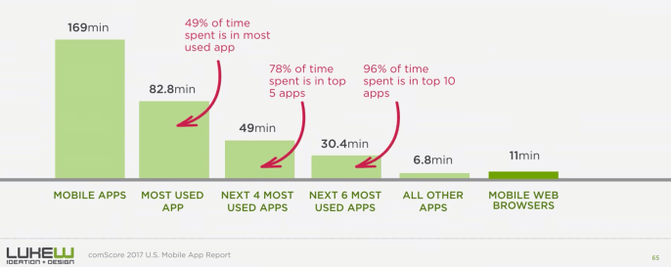
App growth
Between 2005 and 2016, the app growth pace increased. Dramatically.
Examples:
- 2005: Skype took 630 days to hit 40M users
- 2016: SuperMario Run (iOS only) needed only 4 days to hit 40M users
Mobile payments
Mobile payments are not only a trend. To back this up, you just need to look at Paypal. It had <1M USD of mobile payments in 2006. It reached 102B USD in 2016.
Native mobile applications
The Google Play Store announces to have 2.8B apps, while the Apple App Store claims 2.2B apps.
This means that every month, 2 apps are downloaded per person on the planet!
But don't get excited too fast with your company mobile app project... because of the apps downloaded, only 1/3 to 1/2 are used every month.
Another warning you should be careful if you develop or own a mobile product: don't focus on the vanity metrics of downloads, and better check the usage one.
To explain you why:
- 25% of apps aren't used anymore after first time
- 34% of apps are used more than 11 times
- There is an average daily active users loss of -77% after the first three days of use
- And it gets worse with time: -95% of average daily active users loss ninety days after install
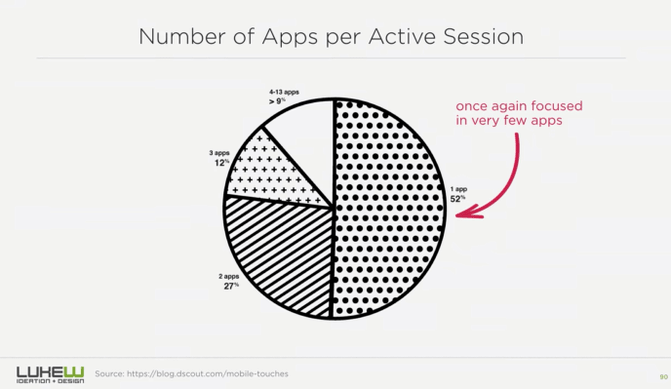
A note about China and India markets
If you follow the tech industry, you must have seen all the initiative of the GAFA and co to tackle issues of India and China countries. Wonder why?
Because their future growth will come from there.
Both countries have 1.3 billion inhabitants. In India, there is only 22% of market penetration by mobile. And 52% in China.
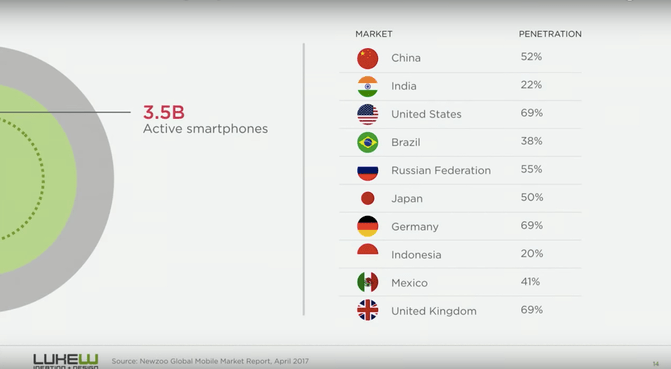
These are just stats
With all these numbers, you could think "Let's go, let's build a native mobile app!"
But be sure to know your market. Statistics and behaviours of a region on the planet do not reflect the entire's planet behaviour!
For instance: even though there is a 70% market penetration of mobile in the US, the usage pattern during Cyber-Monday represents "only" 33% of purchases on mobile. Versus China who has "only" 55% of mobile market penetration, with an usage pattern that is 90% of mobile purchases on their biggest "Single's Day".
So you better analyze your market before crafting anything.
So, why does mobile matters?
Mobile has this power of distribution that never existed before. One app, one click, and you can reach half of the planet in less than a minute. This creates many opportunities.
As Luke Wroblewski puts it:
"Smartphone enable planet-scale reach."
Nevertheless, it's hard to maintain a good retention rate as usage decreases a lot during the first days after the app gets downloaded.
That's why at Liip we focus our business development efforts on apps that have a use in the everyday life, such as Urban Connect, Houston, Compex Coach, and One Thing Less.
What's the future of mobile?
Everyone agrees that the mobile realm reached a maturity plateau. We're not innovating that much anymore in terms of user experience.
Luke gave the example of the famous Adobe toolbar evolution on desktop during the 30 years. It was just pixels moving around. Nothing more...
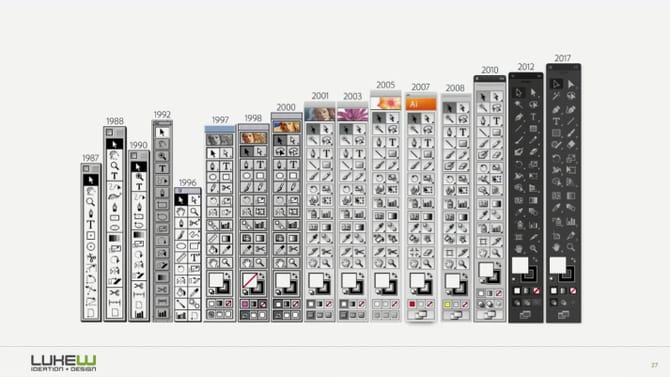
Iteration is cool, until you need more innovation. And to innovate you got to get back to your vision, aka your North Star. What are you trying to achieve? Even more important, why are you trying to achieve it?
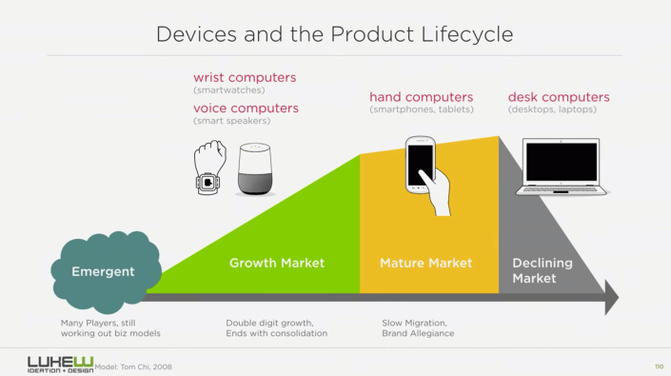
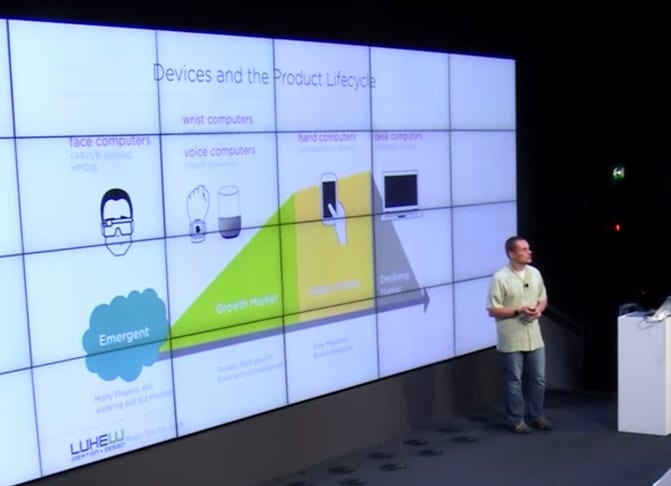
Luke sees the future of the mobile realm in 3 trends: device hardware capabilities, wrist computers, and voice devices.
Device hardware capabilities
One possible future for mobile devices resides in the devices' hardwares. Things such as camera, sensors, etc.
We already have some concrete example that came from the hardware, not the software nor UX iterations:
- Apple and its TouchID which removed all the painful part of login like remembering a password
- Amazon Dash with its "One button to order"
- Amazon Go trial which remove the checkout in its entirety, by relying on device hardware capabilities
- Sensors to identify the user
- Camera/ML to confirms the uniqueness of the shopper
- Camera during shopping to see what you do
- Microphone to detect if you take something or not in your bag
- Infrared sensors to see what's leaving the shelves
- Deep Learning/ML systems of all these data when leaving the store to analyze what you bought, invoice, and automate refilling of the shelves
- The new Apple AirPods which connect automatically to your iPhone, start the sound when you put them in your ears, stop the music when you remove them, all while removing the painful cables
- Google Home to which you just speak, naturally
- Urban Connect with its Natural User Interface* (aka NUI) too, that allows you to come close to your bike, unlock the shakle, and not think a second about how can the lock know its you the owner
Wrist computers and voice devices
Even more actual are the wrist computers like the Apple Watch, and voice devices like Alexa from Amazon.
These innovations are in the growth phase and we start to grasp their value, as we did with mobile phones back in 2010.
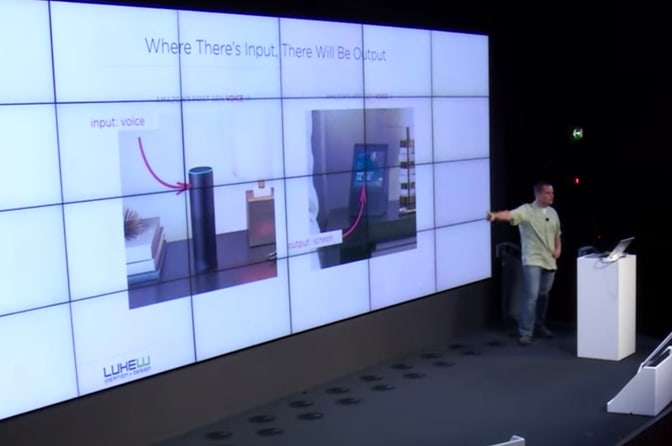
There are existing products out there and mass market use cases start to emerge. In less than a decade, they will be part of our daily lives. During your next train ride, just look at how millenials rely on voice instead of typing on their keyboard to send an SMS these days.
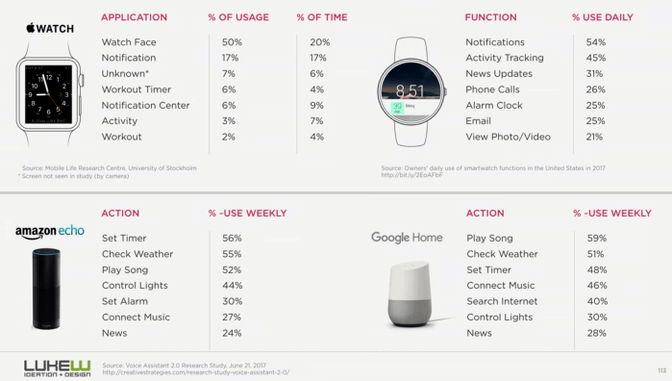
What about AR and VR?
For Luke, AR and VR are in the emergent phase. What this means is that we still have to work out the use cases.
It's by experimenting, betting, trying on real consumers, that real use cases will emerge. But he thinks it'll take more time than wrist computers and voice devices.
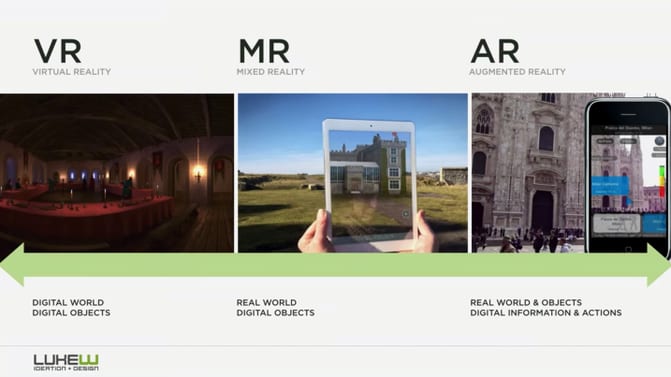
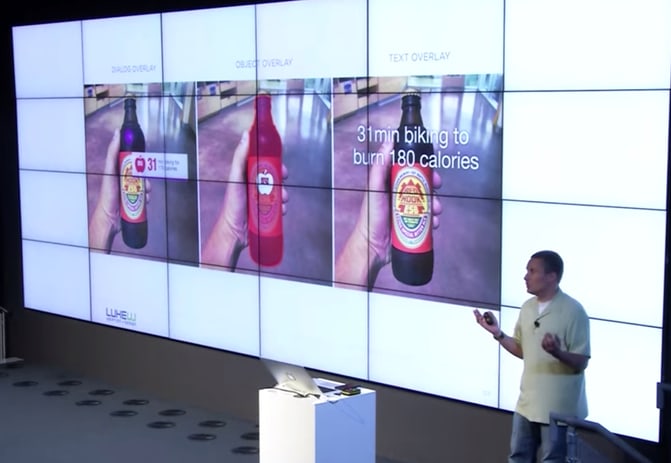
Lessons learnt
1/ We live on a mobile planet
- 3.5B active smartphones
- iOS = 25%, Android = 75% (warning, it's almost the opposite in Switzerland, know you market!)
- 3h spent per day
- 80x times used per day (wake-time)
- Each session: between 15 and 30 seconds
- 32x touches per second
- It's hard to make your app stand out, so better be it useful
- China and India are where there is most growth potential in the mobile realm
2/ The future is at our doorstep
Keep experimenting and documenting yourself about what comes next to not get caught up by surprise, more precisely:
- Devices' hardware capabilities
- Wrist computers
- Voice devices
- AR and VR
What's your take on the future of mobile? Share it in the comments' section below:
References
If you want to watch the complete videos (1h45 each) of Luke, check those two links: Conversions@Google 2018 edition, Conversions@Google 2017 edition

